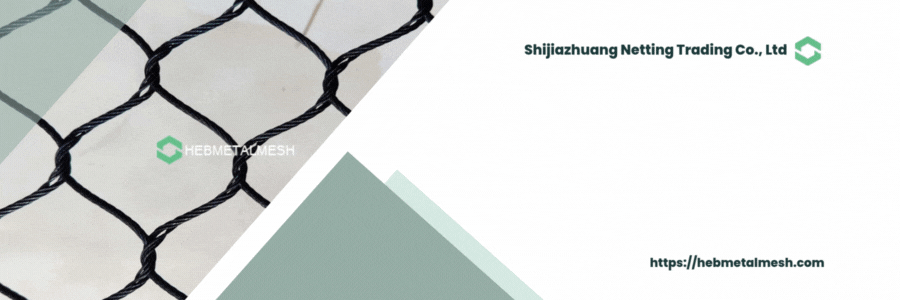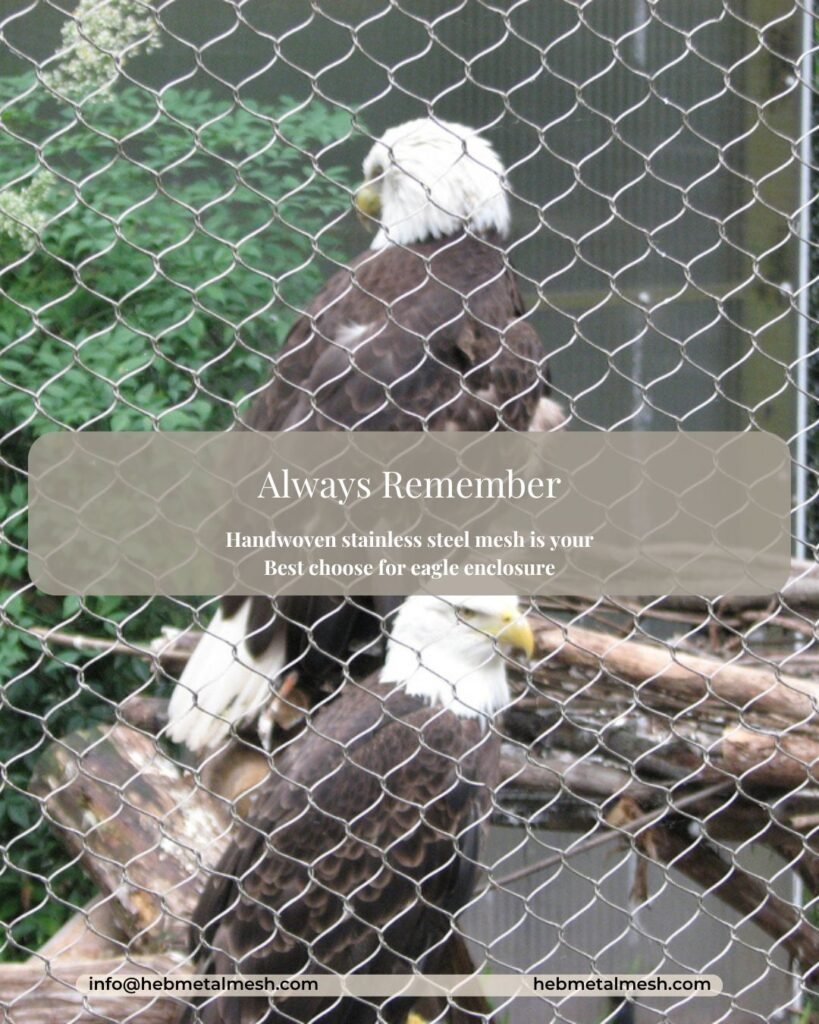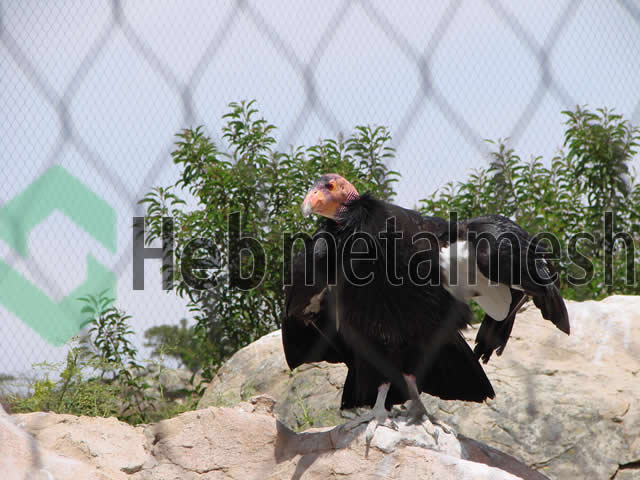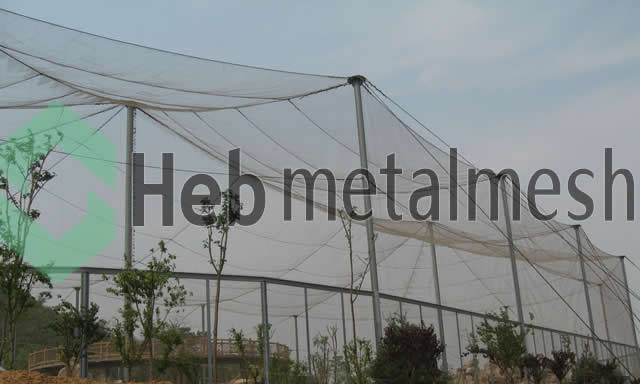Introduction to Eagle Enclosures
Designing the ultimate eagle enclosure is not only a task for wildlife enthusiasts but also a crucial responsibility for conservation efforts. Eagles, as apex predators, symbolize strength and freedom, and embody the beauty of the natural world. However, these majestic birds have specific habitat needs that must be meticulously addressed to ensure their well-being in captivity. Understanding these requirements is essential for creating an appropriate environment.
Eagles thrive in spaces that mimic their natural habitats, featuring ample room for flight, perching areas, and access to a suitable diet. Providing a spacious eagle enclosure that allows for natural behaviors, such as soaring and hunting, is essential for their physical health and mental stimulation. The design should include various vertical and horizontal spaces for eagles to explore, as well as shelter from harsh weather conditions.
Moreover, the safety of the eagles is paramount when designing an enclosure. The use of durable, secure materials that can withstand the strength and beak of these birds is critical. Additionally, incorporating elements such as natural foliage and platforms can enhance the eagles’ sense of security and encourage natural behaviors, contributing to their overall quality of life. A well-designed eagle enclosure not only provides protection and security but also enables these birds to exhibit their natural instincts, thereby enriching their lives.
In conclusion, the importance of an eagle enclosure cannot be overstated. By thoughtfully considering the unique needs of eagles and creating an environment that caters to those needs, we take a significant step in promoting their health and welfare. This enlightened approach to eagle enclosure design serves as a testament to our commitment to wildlife conservation and the preservation of these incredible birds for future generations.
Essential Materials for Eagle Enclosure Construction
When embarking on the construction of an eagle enclosure, the selection of materials plays a pivotal role in ensuring a safe, durable, and conducive environment for these majestic birds. First and foremost, high-quality materials must be prioritized, particularly those that can withstand extreme weather conditions such as heavy snowfall and gale-force winds. Using substandard materials can compromise the safety of the eagles and the overall integrity of the enclosure.
One of the leading options for the framing and structural components of the enclosure is high-quality stainless steel, specifically type 304. This material is renowned for its remarkable durability and resistance to corrosion, making it a preferred choice in various outdoor applications. The longevity of stainless steel can reach up to 30 years with minimal maintenance, proving it to be a long-term investment for eagle enclosures. It can endure harsh weather without degrading, thereby safeguarding the inhabitants from potential hazards.
In addition to stainless steel, utilizing specialized aviary netting, such as reinforced metal mesh or poly mesh, is essential for the walls and ceilings of the eagle enclosure. These materials are designed to withstand the forces exerted during inclement weather while preventing the birds from escaping. High-quality aviary netting allows for adequate airflow and sunlight, which are crucial for the health and well-being of the eagles. By providing a secure yet comfortable environment, the use of these materials fosters a natural habitat that encourages healthy behaviors and well-being in these birds.
A thoughtful combination of stainless steel frameworks and robust aviary netting not only enhances the overall strength of the enclosure but also significantly reduces the likelihood of wear and tear over time. As such, investing in these essential materials will ultimately lead to a secure and enduring eagle enclosure that effectively supports the needs of its avian residents.
Designing the Enclosure Layout: Space and Configuration
Creating an ideal layout for an eagle enclosure is paramount for the health and well-being of these majestic birds. The design should prioritize not just the physical space, but also the functionality that mimics their natural environment. Eagles are known for their impressive wingspans and need ample room to fly, soar, and glide. An optimal eagle enclosure ideally provides a minimum floor area of 800 square feet, but larger enclosures are strongly recommended to accommodate their natural flight behaviors.
When configuring the space, it is crucial to consider vertical height alongside horizontal spread. Eagles are capable of flying at great altitudes, and a high enclosure allows for this necessary vertical space. A structured design that incorporates varying height levels—such as elevated perching areas, treetops, or platforms—mimics their natural hunting and resting sites, encouraging natural behaviors. Constructing perches at differing heights aids in promoting exercise and provides the birds with the opportunity to survey their surroundings, contributing to their overall mental health.
Furthermore, integrating enrichment zones within the eagle enclosure layout is essential. These areas can include a variety of substrates—such as sand or gravel—for digging, alongside areas for water baths or naturalistic features like logs or rocks to enhance the habitat. Such environments not only engage the eagles physically but also mentally, allowing them to exhibit natural foraging behaviors. The strategic placement of these enrichment zones can create a captivating visual appeal, ensuring observers can enjoy the magnificent sight of eagles interacting with their surroundings.
Ultimately, a well-thought-out eagle enclosure design serves as a sanctuary that supports the birds’ natural instincts while providing a remarkable display of their majesty. Ensuring adequate space, height, and enrichment will yield an eagle enclosure that fosters both physical health and behavioral enrichment.
Fencing Solutions for Maximum Security
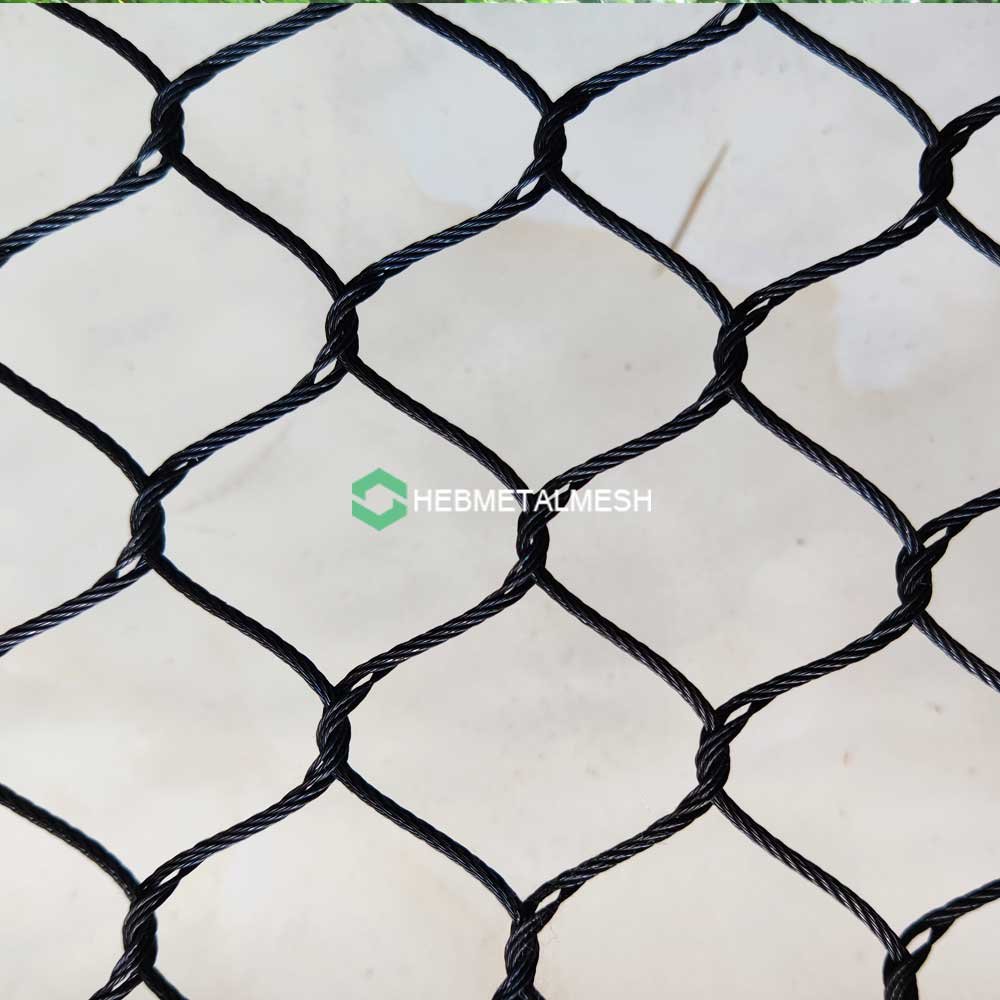
When designing an eagle enclosure, ensuring the utmost security is paramount. Fencing plays an essential role in preventing escapes and protecting these majestic birds from potential predators. Various fencing options are available, each with unique advantages that contribute to the overall integrity of the eagle enclosure.
One of the most critical aspects of fencing is its strength. Heavy-duty materials such as galvanized steel and welded wire mesh are popular choices, offering durability and resistance to wear and tear. These materials can withstand environmental factors such as harsh weather conditions, and their robust structure significantly reduces the risk of breaching. A well-designed eagle enclosure should implement fencing that can resist not only the birds’ efforts to escape but also deter potential intruders.
Height is another crucial factor when selecting fencing for an eagle enclosure. Typically, a recommended height would range between 10 to 12 feet, providing a secure barrier that minimizes the chances of eagles attempting to fly over. Additionally, incorporating an angled top or a curved design can further enhance the enclosure’s security, as it creates an additional obstacle for any bird attempting to gain flight from within the enclosure.
Moreover, the type of fencing material matters as much as its strength and height. Opting for high-quality fencing products, such as those offered by Hebmetalmeshs, can significantly increase the safety of the eagle enclosure. Their specialized solutions provide an extra layer of security through superior construction, ensuring that eagles are sheltered effectively while still allowing for a natural environment within their confines.
In summary, choosing the right fencing solutions for an eagle enclosure is vital for ensuring the well-being of these captivating birds. By focusing on strength, height, and high-quality materials, one can achieve maximum security, providing peace of mind for both the birds and their caretakers.
Maintenance and Care for Your Eagle Enclosure
Maintaining an eagle enclosure is crucial for the health and well-being of the birds housed within it. Regular upkeep not only assures the structural integrity of the enclosure but also minimizes risks related to the eagles’ direct environment. A consistent cleaning routine should be established to keep the space hygienic. This includes daily removal of any waste, feathers, and uneaten food. Weekly deep cleaning, which involves scrubbing surfaces and disinfecting the area, is recommended to prevent any potential health hazards and to ensure a safe habitat for the eagles.
In addition to regular cleaning, inspections for wear and tear are essential. This should include checking the integrity of fencing, perches, and any other structural components that might degrade over time. Inspectors should look for signs of rust, loose fittings, or any potential hazards that could compromise the enclosure’s safety. Attention should also be directed towards the environmental conditions within the enclosure, as fluctuating weather patterns can affect the stability and comfort of the eagles. Harsh winds, rain, and extreme temperatures are potential stressors that can threaten both the enclosure and the inhabitants.
Seasonal preparations are another facet of eagle enclosure maintenance that should not be overlooked. Before the onset of winter, adequate insulation should be provided, ensuring that eagles have a warm and comfortable space to retreat to. During the summer months, ensure that shade and ample water sources are available. These considerations greatly influence the overall vitality of the birds and their adaptation to their habitat. By committing to a structured maintenance plan, eagle enclosures can remain secure, hygienic, and suitable for the majestic creatures they shelter, ultimately fostering their wellbeing and behavior.
Case Studies: Successful Eagle Enclosures
Eagle enclosures come in a multitude of designs, each serving the unique needs of these majestic birds while enhancing their well-being. This section will delve into several noteworthy case studies that represent successful eagle enclosures, showcasing innovative features and the thoughtful selection of materials such as metal mesh and aviary netting.
One exemplary enclosure is found at the renowned African Raptor Centre, where a spacious aviary design accommodates multiple species of eagles. This facility prioritizes natural habitats, incorporating large perches made from natural wood and a variety of climbing structures, simulating a forest environment. The careful layout not only allows the eagles ample space to soar but also creates a visually stunning landscape that educates visitors about their natural behaviors and habitats.
Another notable case is the Eagle Sanctuary in the Pacific Northwest, which uses advanced materials like high-strength metal mesh to construct its enclosures. These materials ensure durability and protect the eagles from potential predators while providing an unobstructed view for visitors. Within this sanctuary, the design features an array of environmental enrichment tools, including water features and diverse foliage, which promote natural behaviors, allowing the eagles to flourish. This thoughtful planning has resulted in an inviting space that enhances both eagle welfare and public experience.
In Europe, the Eagle Project, which rehabilitates injured eagles, presents a unique approach to enclosure design. Their facilities utilize modular designs, allowing for easy expansion as more birds arrive for rehabilitation. The enclosures integrate soft-release areas that enable gradual acclimatization to the wild, showcasing the balance between caring for the eagles and preparing them for life outside the enclosure.
These inspiring case studies demonstrate that well-designed eagle enclosures can profoundly affect the well-being of these birds. By focusing on naturalistic elements, utilizing high-quality materials, and considering the specific needs of the eagles, these facilities set a standard for future eagle enclosure projects. Maximizing both functionality and aesthetic appeal, these examples highlight the importance of thoughtful planning in creating an environment conducive to the health of eagles.
Reviewing the Best Aviary Netting Options
When it comes to designing an optimal eagle enclosure, selecting the right aviary netting is crucial for ensuring the safety and well-being of the birds. The market offers a variety of netting options, each equipped with unique characteristics suited for different environments. This section will delve into some of the best aviary netting choices available today, outlining their strengths, weaknesses, and various applications to aid in making an informed decision.
One of the top contenders is Hebmetalmesh’s aviary netting. Known for its durability, this netting effectively withstands harsh weather conditions, making it an advantageous choice for outdoor eagles enclosures. Its high tensile strength ensures it can endure the significant force that large birds like eagles can put upon it, thereby reducing the risk of wear and tear over time. Moreover, Hebmetalmesh offers netting in a variety of colors, including natural tones and black oxide finishes, allowing for aesthetic customization while blending harmoniously with the surrounding environment.
Additionally, the lightweight design of this netting option contributes to ease of installation, which is particularly beneficial for large enclosures where heavy netting might become cumbersome. However, it is essential to note that while its strength is commendable, potential buyers should evaluate the specific requirements of their eagle enclosure before finalizing their selection.
Another excellent alternative includes polyethylene netting, recognized for its resistance to UV rays and deterioration. This type provides strong protection against predation and is easy to handle during installation or maintenance. However, its lifespan may be shorter in extremely harsh climates compared to metal options. Ultimately, choosing the appropriate netting is paramount to fostering a secure and visually appealing habitat for eagles, ensuring they thrive in their aviary. By understanding the features of each option, eagle enthusiasts can confidently create enclosures that meet both functional and aesthetic needs.
The Importance of Aesthetics in Eagle Enclosures
The design of an eagle enclosure transcends mere functionality; it plays a critical role in the overall well-being of the birds and the experience of visitors. Aesthetics, therefore, are paramount in creating environments that not only meet the physical requirements of eagles but also promote a sense of wonder and respect for these majestic creatures. To achieve this, it’s essential to harmonize natural beauty with practical considerations, resulting in an eagle enclosure that captivates the eye while prioritizing the health and comfort of its inhabitants.
An aesthetically pleasing eagle enclosure integrates elements that reflect the natural habitats of eagles. Naturalistic features such as rocks, trees, and water bodies contribute to a more immersive experience. By mimicking the wild environments where eagles thrive, designers can create spaces that allow these birds to exhibit their natural behaviors, fostering their mental and physical well-being. Incorporating diverse vegetation not only enhances the visual appeal but also provides essential climbing structures and perches, which are crucial for their daily activities.
FAQs About Eagle Enclosures: Answers to Common Questions
An eagle enclosure is a specially designed habitat that provides a safe, controlled environment for eagles in captivity, such as those in wildlife sanctuaries, zoos, or rehabilitation centers. These enclosures are crucial for eagle conservation, as they protect injured, non-releasable, or breeding eagles while mimicking their natural habitat. Properly designed enclosures also support educational programs and research to help preserve eagle populations.
The minimum size for an eagle enclosure depends on the species and purpose (e.g., rehabilitation vs. permanent housing). For example, bald eagles require enclosures at least 30 feet wide, 50 feet long, and 16 feet tall to allow short flights and perching. Long-tail keywords like “humane eagle enclosure dimensions” and “minimum size requirements for eagle enclosures” highlight the need for space that prioritizes the birds’ physical and mental well-being.
Eagle enclosures should use weather-resistant, non-toxic materials like handwoven stainless steel mesh, pressure-treated lumber, or PVC-coated wire to withstand harsh conditions and prevent injury. Incorporate terms like “durable eagle enclosure materials” or “weather-resistant enclosures for eagles” to address concerns about longevity and safety. Avoid materials that rust, splinter, or retain heat, which could harm the birds.
Key safety features include double-door entry systems (to prevent escapes), predator-proof fencing, shaded areas, and soft netting to cushion collisions. For public-facing enclosures, barriers like glass or mesh partitions ensure visitor safety. Search terms like “avian-safe enclosure design” or “safety features for eagle enclosures” reflect interest in balancing eagle welfare and human interaction.
Yes. In the U.S., constructing an eagle enclosure often requires permits under the Bald and Golden Eagle Protection Act and the Migratory Bird Treaty Act. Long-tail phrases like “eagle enclosure regulations in the United States” or “permits for building eagle habitats” address legal concerns. Always consult local wildlife agencies and the U.S. Fish and Wildlife Service for compliance.
Enclosures should be cleaned daily (e.g., removing waste and uneaten food) and inspected weekly for damage or hazards. Deep cleaning and disinfecting should occur monthly. Terms like “eagle enclosure maintenance schedule” or “sanitation practices for raptor enclosures” emphasize the link between hygiene and preventing disease in captive eagles.
Conclusion: Your Journey to Creating an Ideal Eagle Enclosure
Designing an eagle enclosure is both a rewarding and challenging endeavor that requires careful consideration of several critical aspects. Throughout this guide, we have discussed key factors that should influence your design process, which include material selection, layout design, security measures, and ongoing care strategies. Each element plays a vital role in creating a functional and enriching environment for these majestic birds.
The choice of materials is paramount not only for durability but also for the safety and well-being of the eagles. Utilizing high-quality fencing, robust perches, and durable substrates can significantly impact the longevity of the enclosure and the health of the birds. Additionally, a well-planned layout that allows for adequate space, natural lighting, and the incorporation of elements mimicking their natural habitat can enhance the birds’ physical and psychological welfare.
Security measures cannot be overlooked; the enclosure must be designed to protect against potential hazards, ensuring that the eagles remain safe from both external threats and potential escapes. This includes employing strong locks, reinforcement, and monitoring systems to safeguard the inhabitants. Lastly, a thorough understanding of the eagles’ care requirements, including nutrition, health checks, and behavioral enrichment, is essential to maintain their well-being in captivity.
As you embark on your journey to create an eagle enclosure, remember that every design will be unique and should reflect personal insights, knowledge of the species, and a commitment to their welfare. By integrating the concepts discussed in this guide, you will not only provide a safe haven for eagles but also contribute to their conservation and appreciation. The effort you invest in crafting an ideal eagle enclosure ultimately enriches both your life and that of the magnificent birds you are privileged to care for.
